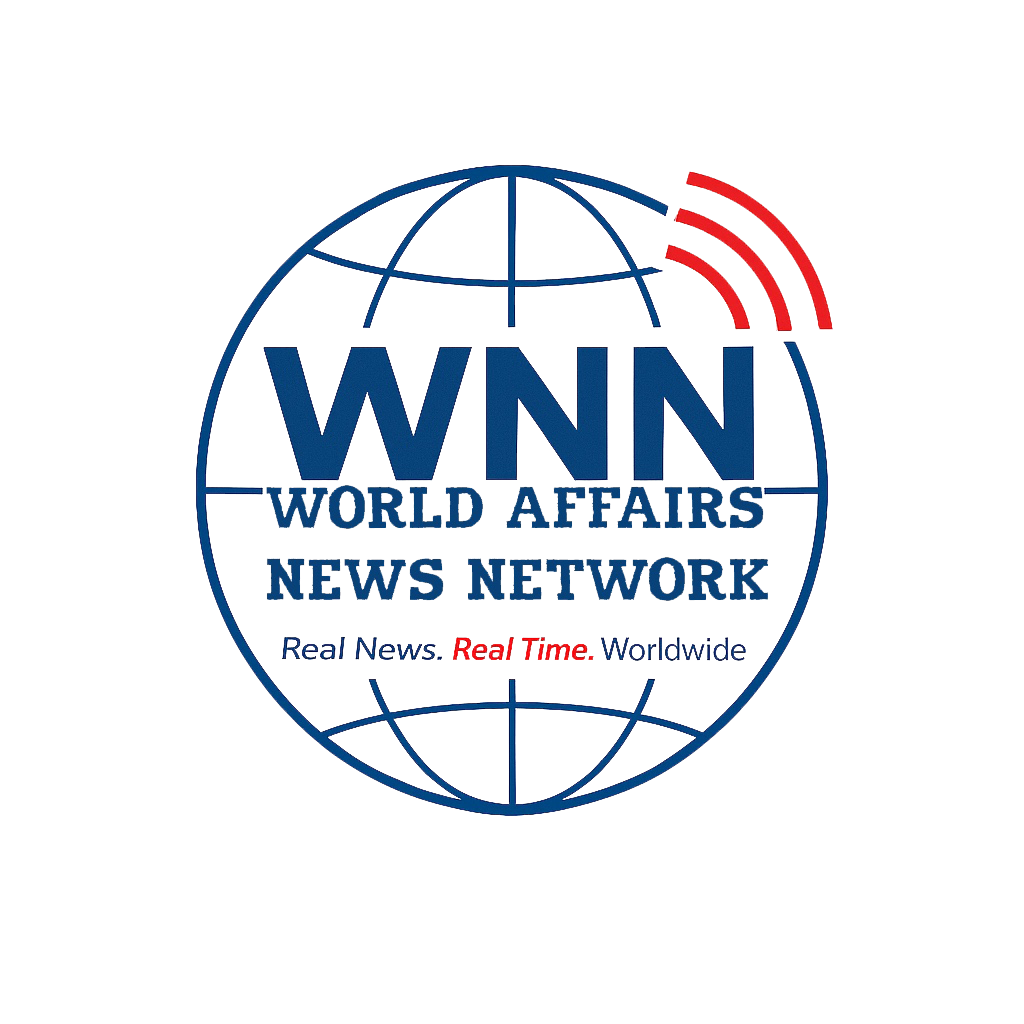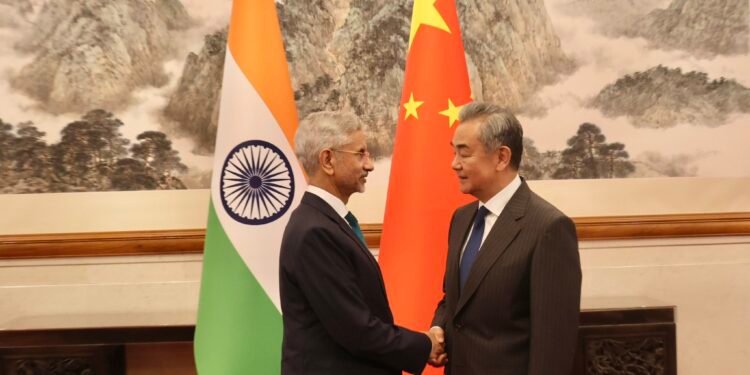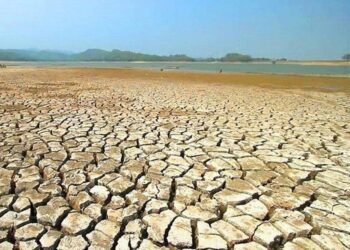BEIJING / NEW DELHI: In a world marked by uncertainty and shifting power equations, the renewed dialogue between India and China signals an attempt to revive the fragile trust that underpins their complex relationship.
Set against the sweeping expanse of the Himalayas and weighed down by centuries of shared history, India and China – Asia’s two largest powers are once again confronting the boundaries of how far they can go in testing, and perhaps mending, their relationship. Indian External Affairs Minister Dr. S. Jaishankar’s recent visit to China for the Shanghai Cooperation Organisation (SCO) summit wasn’t just another routine diplomatic exchange. It was a meaningful, measured effort to recalibrate a relationship frayed by years of military standoffs, diplomatic freeze, and economic blowback all unfolding amid a world order that grows more volatile by the day.
During a crucial bilateral meeting in Beijing with his Chinese counterpart, Wang Yi, Jaishankar distilled India’s primary concern into one clear sentence: “Resolving friction along the border and the ability to maintain peace are fundamental for mutual trust between India and China.”
It was a simple statement, but a powerful one. In it, New Delhi reaffirmed its long-standing position: without stability along the Line of Actual Control (LAC), meaningful cooperation will remain out of reach.
He also acknowledged progress: “Good progress” had been made over the past nine months toward normalization, he said – an important nod to the modest but real results of recent disengagement efforts since the 2020 Galwan Valley clash. Still, much remains unresolved. Flashpoints like Depsang and Demchok in eastern Ladakh continue to test the limits of diplomacy.

Jaishankar also raised another core issue: the need to remove “restrictive trade measures and roadblocks.” It was a quiet reminder of the economic turbulence that followed Galwan. India responded by banning over 200 Chinese apps, tightening foreign investment rules, and suspending direct flights. But trade endured. In fact, by 2023, bilateral commerce had reached over $135 billion, making China India’s second-largest trading partner after the U.S. That said, India remains cautious, deeply aware of its dependence on Chinese electronics, pharmaceuticals, and telecom components. New Delhi now seeks a more balanced playing field.
China, too, is engaging with care. In a separate meeting with Jaishankar, Vice President Han Zheng echoed Beijing’s perspective. “India and China need to advance practical cooperation and respect mutual concerns to ensure stable development of bilateral ties,” he said, according to state news agency Xinhua. His tone signaled an openness to manage tensions without necessarily resolving all differences.
In his opening remarks to Han, Jaishankar acknowledged the symbolic milestone of 75 years of diplomatic ties. He noted that “continued normalization of our ties can produce outcomes that are mutually beneficial” and called for “an open exchange of views and perspectives” between both nations especially in today’s complex and rapidly evolving global landscape.
Later, on X (formerly Twitter), Jaishankar reaffirmed India’s support for China’s SCO presidency, stating, “I expressed confidence that discussions during my visit will maintain that positive trajectory.” His post was cautious, not celebratory a reflection of realism rather than rhetoric.
This is in keeping with India’s broader approach to China: firm on sovereignty, but flexible on shared interests. While India remains critical of Beijing on several fronts, its continued presence in the SCO reflects a deeper strategy. New Delhi understands that in a fragmented Asia, structured conversation often offers more than confrontation.
China, meanwhile, sees the SCO as a counterweight to Western-centric platforms like NATO and the G7. Hosting Jaishankar and signaling a willingness to engage sends a message: Beijing would prefer to keep India from fully drifting toward Western alliances, particularly the Quad (India, U.S., Japan, and Australia), which China views with suspicion. The timing of this diplomatic overture is telling. China faces slowing growth at home and increasing pressure from Washington abroad. A stable, or at least predictable, relationship with India helps Beijing manage its southern periphery.
India is equally aware of its growing stature. With its leadership role in the Global South, its place in the Quad, and its successful hosting of the G20 in 2023, New Delhi is asserting itself as a pivot in global diplomacy. As Jaishankar often frames it, India follows an “issue-based alignment” working with various powers on its own terms, shaped not by ideology but by interest. This is not alignment or non-alignment; this is strategic autonomy.
That theme also ran through another key meeting, this time between Defence Ministers Rajnath Singh and Dong Jun, held a few weeks before Jaishankar’s visit, on the sidelines of the SCO Defence Ministers’ meeting in Qingdao. Singh pressed for a “permanent solution” to the border issue. The very occurrence of this meeting was notable: after years of near-total military disengagement at the senior-most level, both sides appeared ready to reengage cautiously, yes, but substantively.
Of course, the shadow of Galwan 2020 still looms. That violent clash left 20 Indian soldiers and an undisclosed number of Chinese troops dead. It marked a major rupture not just in military terms but in strategic doctrine. India’s response wasn’t just along the border; it was digital, economic, and diplomatic. The incident transformed New Delhi’s view of engagement: no economic relationship can flourish without strategic trust.
Still, in January 2025, direct passenger flights resumed after nearly five years. On the surface, it was a logistical update. But beneath it, the resumption symbolized something more: a shared interest in preventing complete separation. This is not a reset. It’s a careful recalibration.
Meanwhile, trade flows remain resilient. Yet India continues to be uneasy about dependency, particularly in electronics, pharmaceutical ingredients (APIs), and telecom infrastructure. Jaishankar’s call to avoid “restrictive trade measures” was not a throwaway line, it was a signal that New Delhi wants fairer terms, not just restored links.
Domestic politics also matter. Beijing sees stable India ties as a hedge against encirclement, especially amid its frictions with Japan, the Philippines, and the U.S. For India, managing China through strength and steadiness bolsters Prime Minister Modi’s image as a mature global leader, a crucial asset in an election year. Diplomacy that safeguards sovereignty without appearing weak plays well at home.
That said, convergence remains elusive. China’s deepening alliance with Pakistan, its ambiguous stance on Arunachal Pradesh, and its continued infrastructure buildup along the LAC continue to provoke Indian concerns. India is responding with its own mix of hard power and partnerships—from bolstering the eastern command to deepening ties with ASEAN, Australia, and the U.S.
The longer-term challenge lies not just in managing crises but in preventing them. The WMCC (Working Mechanism for Consultation and Coordination) and high-level military talks need to evolve from firefighting to foresight. Trust can’t be imposed. It must be built step by cautious step.
At a time when the world is already strained by the war in Ukraine, Taiwan Strait tensions, and a volatile Middle East, India-China dynamics remain a crucial hinge in the Asian order. If these two ancient civilizations can show that competition can coexist with stability, they may offer a model to a world teetering on division.
The tone is softer now. The border is still tense. But the conversation has resumed. It may not be peace, but it may be something even more valuable: responsible competition!
⁃ This Op-Ed. is written by Dr. Shahid Siddiqui – a geopolitical analyst and contributor to WNN. Follow him on X: @shahidsiddiqui.





















